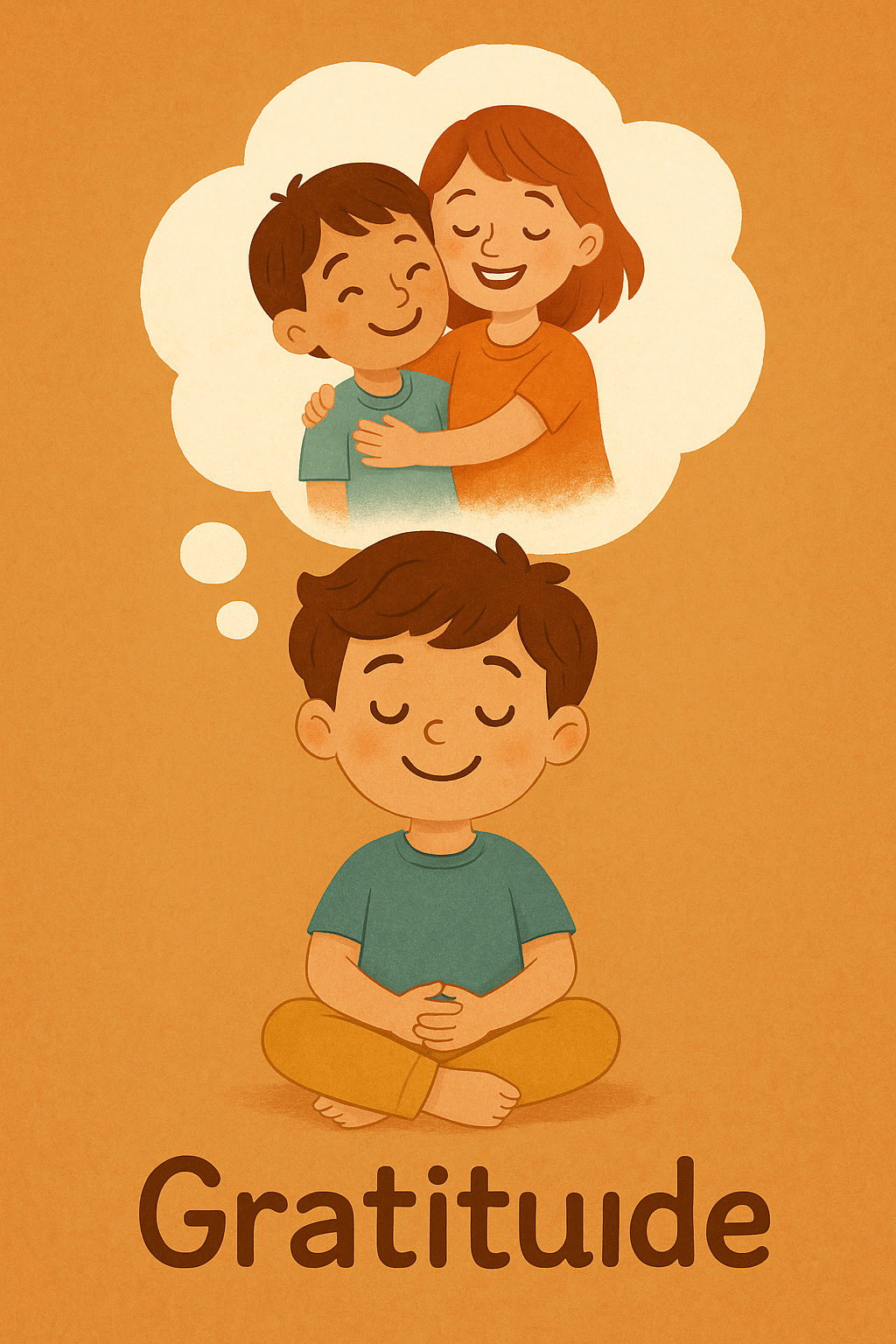Your basket is currently empty!

Why Gratitude Matters
One of the most powerful ways to nurture happiness in children is to teach them gratitude. Gratitude for kids shifts their focus away from what’s missing and towards what’s already wonderful. As a result, children who practise gratitude grow more joyful, compassionate, and resilient in daily life.
In addition, mindfulness and gratitude go hand in hand. When a child pauses to reflect, “I’m grateful my friend shared her toy”, they stay grounded in the present and tune into kindness. Consequently, these simple recognitions build emotional strength and remind them that goodness surrounds them.
The Benefits of Gratitude for Kids
Gratitude practice does more than create happy feelings. In fact, it provides a wide range of emotional and social benefits:
- Boosts positivity – Children who practise gratitude notice what’s going well, which naturally increases happiness.
- Builds resilience – When challenges arise, grateful kids balance difficulties with positive perspectives. As a result, they bounce back more quickly.
- Strengthens relationships – Saying thank you deepens bonds with family and friends and also encourages kindness.
- Supports emotional health – Gratitude encourages reflection; therefore, kids learn to process feelings more constructively.
- Encourages mindfulness – Pausing to notice something good develops awareness and presence in everyday life.
Simple Gratitude Practices
Gratitude doesn’t need to feel complicated. On the contrary, small, everyday rituals help children build the habit:
- One good thing at dinner
Ask each family member to share one thing they feel thankful for. This creates connection as well as positivity. - Bedtime gratitude pause
Before sleep, invite your child to reflect on one happy or kind moment from their day. Over time, this becomes a calming bedtime ritual. - Gratitude jar
Keep a jar where kids write or draw things they feel thankful for. At the end of the week, open the jar and read them together. As a result, gratitude turns into a fun family activity. - Challenge gratitude
Encourage kids to spot something positive even in tough moments. For example: “I’m thankful I tried, even though it was hard.” This helps them see resilience in action. - Nature gratitude walk
Pair gratitude with mindful listening for kids or mindful art for kids. During a walk, invite children to notice something they appreciate in nature — the colour of a leaf, the sound of a bird, or the feel of the breeze. In addition, let them share what stood out most.
Gratitude Journaling
Journaling offers one of the most powerful ways to strengthen gratitude. A gratitude journal gives children space to record what they feel thankful for each day. They can write, draw, or decorate their pages with stickers. Furthermore, when they look back, they see a collection of joyful moments, kind actions, and small achievements.
Our Feelings Journal makes this practice simple and engaging. With prompts, open spaces for drawings, and playful layouts, it guides children to connect gratitude with emotional awareness.
In addition, journaling outdoors helps them connect gratitude with the calming power of nature.
Everyday Tips for Parents and Teachers
To make gratitude part of everyday life, try these simple strategies:
- Model gratitude – Say thank you often and share your own moments of appreciation. As a result, children mirror your behaviour.
- Make it visible – Keep a gratitude wall, journal, or jar where kids can see it daily. Consequently, gratitude becomes a visible part of their environment.
- Link it with mindfulness – Pair gratitude with mindful breathing for kids or mindful journaling for kids. In this way, one practice reinforces the other.
- Celebrate small wins – Show kids that gratitude isn’t only for big events; instead, it’s also for tiny joys like a smile, a hug, or sunshine after rain.
Why It Matters
Ultimately, gratitude shifts perspective. Instead of focusing on what they lack, children learn to celebrate what they have — from a loving hug to a kind word from a friend. Consequently, these practices nurture positivity, emotional resilience, and joy.
When journaling becomes part of the practice, gratitude turns into a long-lasting treasure chest of good memories. On difficult days, children can open that chest and remember that good things always exist.
Above all, encouraging gratitude for kids helps them grow into compassionate, optimistic, and grounded individuals — a gift they carry through life.